Case Study: Chronic Hip Flexor Pain When Running 90% Better Within 3 Days
By Dr. Sebastian Gonzales, DC, DACBSP®, CSCS
Hip flexor pain can wreak havoc on your love for running. Many of us run for weight loss or because it’s something we feel we “need to do” to be healthy. But not Julie. She simply loved the act of running!
A 10-minute marathon runner in her mid-40s, Julie would typically run five days per week. Some days she would run in track groups, rising to the challenge when her friends motivated her to get faster. Other times, she relished the solitude of solo runs.
Running was Julie’s “fix.” So when a cluster of symptoms started keeping her from doing what she loved, she knew she needed to take action. She came to Performance Place® Sports Care after seven months of unsuccessful attempts at treating the pain. I knew a detailed examination and proper guidance on how to decrease her symptoms would get her on the right track.
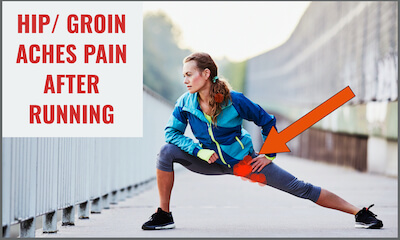
How It All Started
About 10 months ago, Julie began to notice hip flexor and sit bone pain when she ran. Since she didn’t do anything to create it, she thought it would go away on its own—just like most of her minor running-related issues had in the past.
But this time was different.
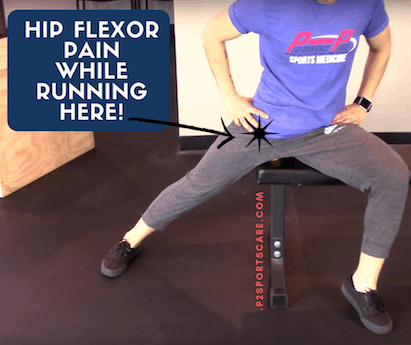
Soon, her hip flexor and sit bone were starting to ache at the very first step of her morning run, causing her pain for the entire duration. Her sit bone region would feel aggravated all day, especially exacerbated when she sat for long periods of time at work. The pain weighed on Julie’s mind. She wondered what she could do to make it go away.
When Julie couldn’t stand the aching any longer, she decided to take a break from running for a few days. Her hip flexor pain stopped, so she made the difficult decision of not running for two weeks.
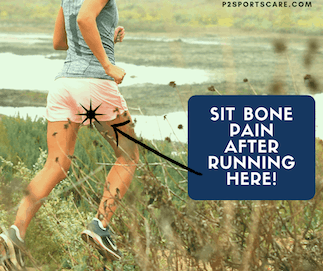
Although it was painful to give up running, she hoped the pause would give the condition time to improve. And it did—until she hit the track again.
Just one minute into Julie’s first run in weeks, the pain surged back in full force. Frustrated, she decided to seek help.
What Didn’t Work
Julie started by exploring the typical healthcare route. But she quickly became irritated when her primary care doctor suggested rest and over-the-counter anti-inflammatory medications. She had already tried rest, to no avail, and she didn’t like the idea of medication.
Unsatisfied, Julie searched for a better solution.
Her next stop was to see a physical therapist who was highly recommended by one of her friends. Physical therapy was covered by Julie’s insurance, minus deductible and copay, so she decided to give it a try.
Under her physical therapist’s guidance, Julie tried to remedy her problems with a daily 15-minute routine consisting of stretching, glute strengthening and hip mobility drills. As her inpatient care, she received tool-assisted soft tissue work. But despite two months of diligently following this plan, her sit bone was still tender while sitting at work. And she still hadn’t returned to running.
Frustrated by the lack of progress, Julie continued searching for a real solution.
Next, she visited a chiropractor suggested by a friend whose sciatica had improved under his care. Julie received adjustments and soft tissue work two times per week, which was covered partially by her insurance. But after three months, she saw little improvement.
At this point, Julie was beyond frustrated. It had been five months since she was able to run, and there was still no real solution in sight. She decided to search the Runner’s World forum for more ideas on how to loosen up her hip flexor. After learning about the Active Release Technique, she visited a specialist who cost $150 per 15-minute session—not a penny covered by her insurance. After two months, the treatment yielded no improvement.
In all, Julie’s seven months of health care had cost her more than $2500. But more critical than her financial hit was the void in her life from not running. She still couldn’t even jog without her hip flexor and sit bone immediately starting to ache.
Frustrated, stretched thin financially and still unable to do what she loved, Julie felt hopeless. She considered giving up running forever—until she found Performance Place® Sports Care.
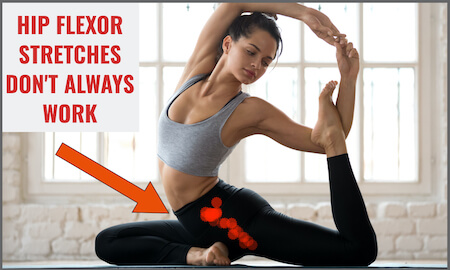
What Works For Hip Flexor Tightness
Visit #1 At Performance Place® Sports Care
When I met Julie for her initial examination, we talked for about 30 minutes. We discussed her pain, what had or hadn’t worked so far and her goals for recovery. During this visit, I learned just how important running was to Julie’s quality of life.
Julie told me that what makes her truly happy in life is the experience of running. By not running, she was missing out on the races and other social events that she loved. But as much as she tried to ignore it, the pain was too much. She described how her sit bone and hip flexor “grabbed with every step” while she was sitting down and as she began to jog.
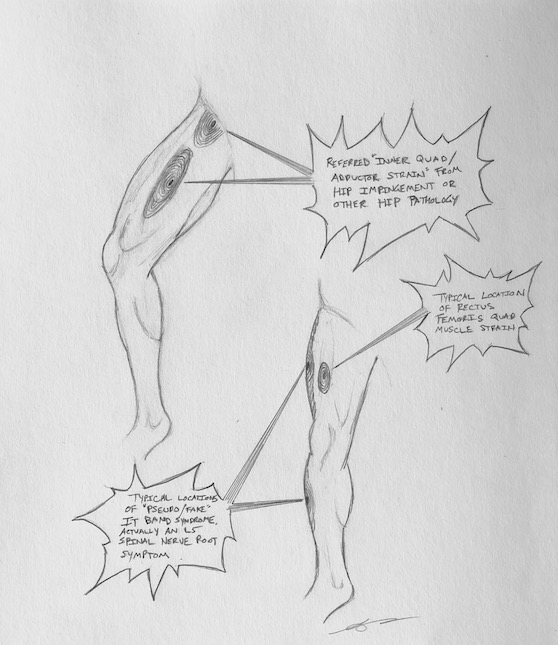
Julie also shared one of her biggest fears: that I would tell her she wouldn’t be able to run anymore. I assured her I would get her back to running as soon as possible.
Within the next hour, her examination findings revealed the real positive news she had received in seven months: her symptoms could be significantly reduced with a simple movement-based correction called a lumbar spine repeated extension.
In just three minutes of low-back arching—30 repetitions total—the pain Julie had experienced for months decreased drastically. She was able to sit, walk and even jog up and down the hallway at our office without feeling the pain at all!
We had uncovered the missing link in her recovery. And the best part was that after proper coaching, she could do the exercises at home without the assistance of a doctor.
I cleared her to run intervals with mandatory full recovery after Day 1. However, slow long-distance runs oftentimes don’t allow gait retraining to occur, and instead can trigger symptoms to return. I instructed Julie to hold off on long runs for a few more weeks.
The plan of attack I made for Julie:
- Return to running as a “sprinter” (full recovery between bouts)
- Perform daily spinal rehab (three exercises that should take no more than five minutes)
- Begin to build strength with the hips via coaching and a safe amount of weight
Some of the exercises selected for her recovery:
- McKinzie End Range Extension Protocols
- Birddogs
- Side Planks
- Isometric Single Leg Stance Holds
Julie had initially found Performance Place® while searching for a gait analysis. Little did she know that she didn’t need that to solve her problem. Instead, she just needed a detailed examination and proper guidance on how to decrease her symptoms.
Julie reported a 90% improvement within the 3-day period after her first visit. And most importantly, she was finally running again.
Her Plan Of Attack Moving Forward
Visit #2 At Performance Place® Sports Care
On Julie’s second visit, she was almost in tears. After dealing with pain for so long, she could finally see light at the end of the tunnel. She knew she would overcome her hip flexor and sit bone issue.
In the few days since her first visit, Julie had been running on the treadmill at speeds she had never even attempted before—all with no pain. During our second visit, we transitioned her to a long-term plan of attack, with resistance training as one of its key elements.
We talked at length about the “why” behind my resistance training recommendation.
Resistance training assists in building resiliency; it allows you to become “antifragile.” People often think after suffering through an ongoing ache or pain, like Julie did, that they need to be extra careful of that area forever. This isn’t true, yet it’s a valid fear we all have.
Using resistance training with the right programming, loads, repetitions and efforts, we can build buttresses within our body. This takes months and hard work, yet when used by runners like Julie, some really cool side effects can occur. Typically, these runners end up running faster with less pain than they’ve ever thought possible!
Again, it takes hard work and dedication, which many people lack. Becoming a resilient, strong runner is not easy. If it were, everyone would be professionals.
Using buttressing as a method of treatment, Julie was able to return to running—and then some. She felt more “power in her legs” than ever before and was less tired when running the same 10-minute pace.
Within one week of starting care with me, she started running around 7:30 minute pace intervals. She never knew she could run at that pace for any duration. Her legs felt “freer” than ever.
Why It Worked
What did we do that was so different than all the treatments Julie had received in the past? We treated her symptoms from the root cause and chased pain into the surrounding muscles.
All the treatments Julie had tried before addressed the hip flexor as the root cause. In reality, what was “telling” the hip flexor to become tight was the question that needed to be answered.
Julie’s exam revealed that her hip flexor and sit bone pain stemmed from a lumbar disc that had become “sensitized.” She didn’t have back pain or a traumatic injury, which is an important reminder that you don’t have to experience a major incident to have a spinal disc that causes regions of tightness and pain. As with many people, Julie’s disc sensitivity slowly crept up on her, creating symptoms that increased with her daily movements and activities.
Disc sensitivity can show up in hip flexor tightness and sit bone pain, as Julie was experiencing, or a range of referred signs that are either single-sided (more common) or occurring in both sides at the same time (less common):
- Piriformis tightness
- Low back tightness or pain
- Tensor Fascia Lata (TFL) tightness
- Chronic IT band tension
- Calf cramping or tightness
- Knee pain with negative X-ray & MRI
- Groin pain
- Shooting leg pain
- Deep ache in one hamstring
It’s common to have irritated discs (herniations not required) that create local chemical changes around the exiting spinal nerve root. This, in turn, tells the hip flexor and sit bone “alarms” to sound. The tightness and pain Julie was suffering from were not the “fire” itself; they were the “fire alarm” that was located across the room from the fire.
After finding the missing link, I recommended resistance training to help Julie bring her running abilities to a whole new level.
Resistance training, when performed with good form, provides a “buttress effect.” In nature, a buttress is a support system that allows a tree to grow beyond its normal ability yet still not fall over. The tree can grow wider and taller with a broader root system. We see buttresses in architecture, as well. In Ancient times, buttresses allowed walls to stay upright against lateral forces like wind or attack.
We have stronger building materials today, so the need for buttressing supports has decreased. However, our bodies can benefit tremendously through buttressing supports, which can be built through consistent weight training.
By addressing the root cause and following a long-term recovery plan, Julie reported a 90% improvement in pain within a 3-day period. And most importantly, she was back to running—and felt more powerful than ever.
All we had to do was treat her issue at the root cause, which required no stretching, spinal adjustments or soft tissue work!
Find Your Missing Link To Hip Flexor Pain
In total, I saw Julie for six sessions over the course of two months. In that period, we covered a significant amount of resistance training, including a number of exercises that transformed how she felt:
- Sumo deadlift (KB 20kg)
- Single leg deadlifts
- Goblet squats
- Single arm dumbbell rows
- Crawling/pressing progression
- Loaded carries
I also recommended resistance training two to three times per week for six weeks in replacement of any existing weight training program. Each resistance training session could be completed within 45 minutes.
Julie continues to refer her friends who have “tried everything” for their aches, pains and chronic tightness issues. But it’s important to remember that Julie’s experience under my care is unique. That’s because each human is unique.
There’s no cookie-cutter method of care. If someone offers a standard method of care for your problem, run away!
If you’re suffering from an issue that “no one can figure out,” please come see me for an examination. Most chronic issues people experience aren’t that hard to reduce, yet they tend to give up when they’ve experienced unsuccessful treatments.
You can get better! You are resilient! You are not broken! You are not getting “too old!”
Typically all that is missing is a small piece of the puzzle. In Julie’s case, her missing link was treating the disc prior to the hip. Once your missing link is found, you’ll get better in leaps and bounds, just like Julie did. Allow me to be your guide.
Yes, my guidance does cost more than a standard physical therapy or chiropractic examination. But the results are worth it; just ask Julie.
— Dr. Sebastian Gonzales DC, DACBSP®, CSCS

